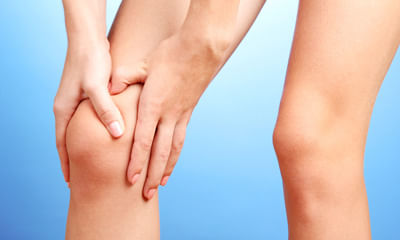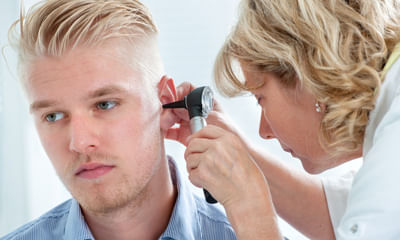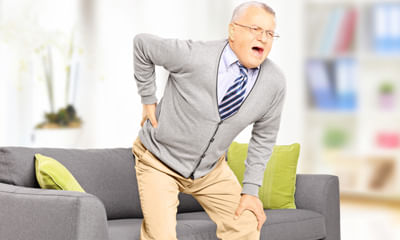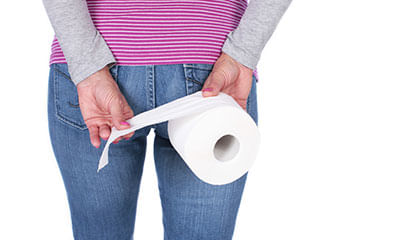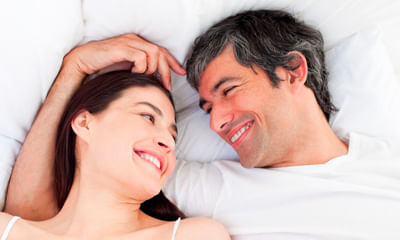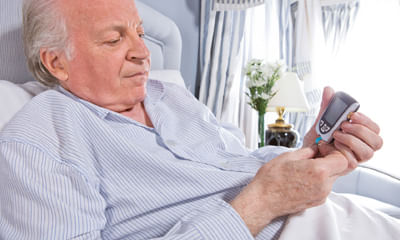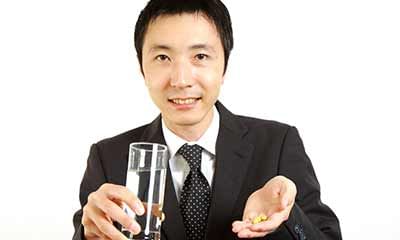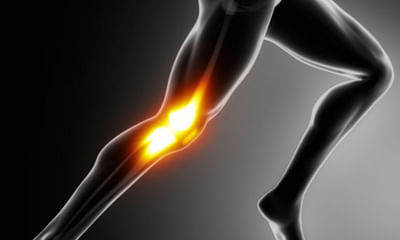Blood Clot Healing Time
Hi, my mom had an nerve rupture in brain (sah) in feb first week, we got admitted to hospital and they did dsa and didn' ...
Ask Free Question
I'm sorry to hear about your mother's health condition. A blister aneurysm, also known as a dissecting aneurysm, is a rare type of aneurysm that occurs when a tear develops in the wall of an artery, causing blood to accumulate in the surrounding tissue. This type of aneurysm can be very dangerous and may require urgent medical attention. Flow-diverting stents are a relatively new type of treatment for aneurysms. They work by redirecting blood flow away from the aneurysm and allowing the artery to heal over time. The procedure involves placing a small metal mesh tube (stent) across the aneurysm, which helps to redirect blood flow away from the aneurysm, allowing it to heal over time. As with any medical procedure, there are risks associated with flow-diverting stent placement, including bleeding, infection, and stroke. However, these risks are generally low, and most patients recover without any major complications. After the operation, your mother may need to stay in the hospital for a few days to ensure that there are no complications. She may also need to take medications to prevent blood clots and to manage pain. It is important to follow the doctor's instructions regarding recovery and post-operative care to ensure the best possible outcome. It is difficult to predict the chances of any abnormalities occurring after the operation, as this will depend on many factors, including the location and severity of the aneurysm and the overall health of your mother. However, flow-diverting stents have been shown to be effective in treating blister aneurysms and reducing the risk of future complications. It is important to discuss any concerns you have with your mother's healthcare provider, who can provide more specific information about her condition and treatment options. They can also provide guidance on what to expect before, during, and after the procedure. Take care.
Hai I am 39 years old female since last 15 days my right leg ankle one hard lump if I touch that it is painful what's th ...
Ask Free Question
Regards Lybrate user. The concern that you are citing may be "trigger point" in the muscle. Trigger points are very painful to pressure and may occur in muscle due to an in-coordinated effort or overactivity of a muscle. Also trigger points do not occur in isolation, as there is always a chain of muscle activity in lower extremity (i.e. Legs). They are however simple to be treated. It is recommended that you consult a physiotherapist directly to know more or you may consult us for an online consult.
Recently I got my ear wax cleaned by syringing. After syringing I observed bleeding in my ears which stopped the same da ...
Ask Free Question
I am sorry to hear about your concern but will be happy to assist you. If ear wax was removed, it can cause a small scratch inside the ear canal. This happens about 10% of the time. The scratch oozes 1 or 2 drops of blood and then clots. This should heal up in a few days. Let's connect over a call so that we can discuss your concern in details and make a suitable treatment plan for you.
I am 31 years old, had annal fissure, now no bleeding but a small tiny hard lump and mild pain outside of the anus. The ...
Ask Free Question
The small tiny lump outside anus can be skin tags, that occur secondary to anal fissure. For better treatment of anal fissure, clinical (physical) examination is very much important to check whether surgical management is necessary or not. Till then, do sitz bath 3-4 times/day and apply anobliss ointment & use any stool softener. It would be best if you visit a general surgeon nearby. (can consult me if in howrah district).
I have pain in my both legs specially calf muscles from past three years I consulted many doctor and many test but no on ...
Ask Free Question
Back pain can affect people of any age, for different reasonsas people get older, the chance of developing lower back pain increases, due to factors such as previous occupation and degenerative disk disease. Lower back pain may be linked to the bony lumbar spine, discs between the vertebrae, ligaments around the spine and discs, spinal cord and nerves, lower back muscles, abdominal and pelvic internal organs, and the skin around the lumbar area. •acute pain starts suddenly and lasts for up to 6 weeks. •chronic or long-term pain develops over a longer period, lasts for over 3 months, and causes ongoing problems. Home advise: •resting from strenuous activity can help, but moving around will ease stiffness, reduce pain, and prevent muscles from weakening. •applying heat, ice, ultrasound, and electrical stimulation — as well as some muscle-release techniques to the back muscles and soft tissues — may help alleviate pain. •as the pain improves, the physical therapist may introduce some flexibility and strength exercises for the back and abdominal muscles. Techniques for improving posture may also help. •the patient will be encouraged to practice the techniques regularly, even after the pain has gone, to prevent back pain recurrence. Regular exercise helps build strength and control body weight. Guided, low-impact aerobic activities can boost heart health without straining or jerking the back. Before starting any exercise program, talk to a health care professional. There are two main types of exercise that people can do to reduce the risk of back pain: •core-strengthening exercises work the abdominal and back muscles, helping to strengthen muscles that protect the back. •flexibility training aims at improving core flexibility, including the spine, hips, and upper legs. We suggest you to wear lumbosacral corset (belt) which is available at our clinic. If you want you can buy from us, if you are far away from chennai we can send you by courier. The reason why we are conveying you to buy from us is we can demonstrate over the videocall (using whatsapp) and also we can monitor you throughout when to wear it and how long to wear it. And also if you find any difficulty wearing the brace you can also revert back to us for few more suggestions and we can propose you good solution how to go about it. Uses of lumbosacral corset (belt) a lumbosacral corset adds pressure to the intra-abdominal area. This adds stability to the spine. It is prescribed to people suffering from moderate to severe pain. Other benefits of using a lumbar spine belt are: 1.helps in a certain degree of immobilization of facet joints. 2.reduces pain to allow continuation of normal activities. 3.speeds up the healing process. 4.the pressure exerted by a lumbar spine belt helps in stretching the erector spine muscles. 5.this belt can also be used to support the lower back while exercising. Ohelps prevent rolling oprovides stability to lumbar and sacral regions of the back ocan be used when performing actions like lifting and handling heavy items ocan also be used when playing sports orestricts back movement to aid treatment of back problems do’s and don’ts sitting do: • sit as little as possible and then only for short periods. • place a supportive towel roll at the belt line of the back especially when sitting in a car. • when getting up from sitting, keep the normal curves in your back. Move to the front of the seat and stand up by straightening your legs. Avoid bending forward at the waist. • try to keep the normal curves in your back at all times. Don’t: • do not sit on a low soft couch with a deep seat. It will force you to sit with your hips lower than your knees and will round your back. You will loose the normal curve in your back. • do not place your legs straight out in front of you while sitting (e.g. Sitting in the bath tub). Standing do: • if you must stand for a long period of time, keep one leg up on a foot stool. • adapt work heights. Don’t: • avoid half bent positions. Lifting avoid lifting if you can. Do: • use the correct lifting technique. Keep your back straight when lifting. Never stoop or bend forward. Stand close to the load, have a firm footing and wide stance. Kneel on one knee, keeping the back straight. Have a secure grip on the load and lift by straightening your knees. Do a steady lift. Shift your feet to turn and do not twist your back. Don’t: • do not jerk when you lift. • do not bend over the object you are lifting. Lying do: • sleep on a good firm surface. • if your bed sags, use slats or plywood supports between the mattress and base to firm it. You also can place the mattress on the floor, a simple but temporary solution. • you may be more comfortable at night when you use a pillow for support. Don’t: • do not sleep on your stomach unless advised to do so by your doctor or physical therapist. Bending forward do: • keep the natural curves of your back when doing these and other activities: making a bed, vacuuming, sweeping or mopping the floor, weeding the garden or raking leaves. Coughing and sneezing do: • bend backwards to increase the curve of your back while you cough or sneeze. Driving a car do: • drive the car as little as possible. It is better to be a passenger than to drive yourself. • move the seat forward to the steering wheel. Your seat must be close enough to the wheel to keep the natural curves of your back. If your hips are lower than your knees in this position, raise yourself by sitting on a pillow. Exercises for low back pain safety guidelines • an increase in your low back pain can be expected with these exercises. This is acceptable as long as your leg symptoms are not increasing. • if while doing these exercises, your pain worsens or you have new pain or symptoms, stop the exercises and discuss your symptoms with your doctor or physical therapist. • stop exercising and let your doctor or physical therapist know right away if you have any change in your bowel or bladder control or any increase in weakness in your leg or foot. Exercises ‰ •press-ups: keep your back and buttocks relaxed and use your arms to press up. Concentrate on keeping your hips down and push up your upper body as high as possible. •double knee to chest: grasp both your knees with your hands and pull toward your shoulders. Hold the stretch for 1 second. Let your knees return, but keep them bent at arms length. ‰ •lumbar spine stretches: lie on your back. Bring your knees towards your chest. Rotate your knees towards the pain. •side-lying position: lie on your side and face forward. Have both arms straight in front and bend your knees. Turn your head as you move your top arm across your body as far as you can. Keep your arm in place and turn your head back to the starting position. Look back again and turn your head farther if you can. Bring your head and arm back to the starting position. Relax and repeat 10 times on each side. •hamstring stretch: lie on your back with your legs out straight. Raise your leg up and put your hands around the upper leg for support. Slowly straighten the raised knee until you feel a stretch in the back of the upper leg. Hold, then relax and repeat 10 times on each leg. •standing arch: stand with your feet apart and hands on the small of your back with fingers pointing backwards. Bend backwards at the waist, supporting the trunk with your hands. Keep your knees straight. Hold for 5 seconds. Repeat 3 to 5 times. Side glides: stand at a right angle to the wall about 2 feet o eliminate your pain improve your muscular endurance and strength attain better posture, balance, body awareness and co-ordination improve your balance and flexibility learn to lift properly.
Hello sir, thank you so much for your reply. I'm further answering to your reply 1 hour ago on my question related to pi ...
Ask Free Question
Pain and swelling associated with external piles could be managed by sitz bath; anti-inflammatory medicines etc. Size of external piles will reduce considerably by this treatment. But you should not expect external piles will disappear by this treatment only. You need to get these removed either surgically or by graded ksharsutra treatment. Surgery is not a right choice for the reason of recurrence of the problem and other complications. However, these can be removed conveniently by graded ksharsutra without any complication. No hospitalization or bed rest is required in graded ksharsutra treatment. You can continue your normal routine activities as usual in this treatment. For further support; you may call reception at sushruta ano rectal institute.
Penile fracture urethral injury, 5 saal hogye koi treatment nahi jaraya, aaaj scrotum me fluid h no erection ejeculation ...
Ask Free Question
The penis is most often hurt during sex. Injury to the penis is rare when it isn't erect because it is flexible. During an erection, blood flow in the arteries makes the penis firm. During forceful thrusting, the erect penis may slip out of the vagina and strike the partner instead of going back into the vagina. The penis may then bend sharply despite the erection. You may feel a sharp pain in the penis and maybe hear a "popping" sound. This is often followed by a rapid loss of the erection. The pain and sound are made by a tear in the tunica albuginea, which is stretched tightly during an erection. Urologists often call this injury a penile "fracture, even though there is no bone in the penis. The pain may last for a short time or it may continue. Blood can build up under the skin of the penis (hematoma), and may become swollen and badly bruised. Blood at the tip of the penis or in the urine is a sign of a serious injury to the urethra. Placing a rubber tube or other constricting device around the base of the penis that is too tight or left on for too long can also injure the penis. Rings or other stiff objects (such as plastic or metal) should never be placed around the penis. These objects can become stuck if the penis swells further. These items can cause lasting damage to the penis if the blood flow is blocked for too long. The urethra and/or penis may also be damaged if objects are put into the tip of the penis. If you've injured your penis, your urologist will ask you about your medical history and perform a physical exam, along with blood and urine tests. The goal is to gauge the damage to the penis. Your urologist may gently place a fiber optic camera into your urethra to check for damage. You might also have an x-ray study called a "retrograde urethrogram. This is performed by injecting a special dye through the urethra and then taking x-rays. If the x-ray shows the dye leaking outside the urethra, it may suggest damage to that part of the urinary tract. Your urologist might also want to see images of the inside of your penis by ultrasound (sound waves) or mri (radio waves in a strong magnetic field). For damage caused by sex the treatment for a penis “fractured” during sex is most often surgery. This treatment has lower rates of erectile dysfunction, and penile scarring and curvature. Surgery is done under anesthesia so no pain is felt. The most common surgery is to make a cut around the shaft near the head of the penis and pull back the skin to the base to check the inner surface. The surgeon will then remove blood clots to help find any tears in the tunica albuginea. Any tears are repaired before the skin is sewn back together. A catheter (a thin tube) may be placed through the urethra into the bladder to drain urine and allow the penis to heal. With the whole penis bandaged, you may stay in the hospital for 1 or 2 days. You may go home with or without the catheter. You may be given antibiotics and pain meds. Your surgeon will want to follow up with an office visit to check on healing. For serious trauma for the rare cases where part of the penis has been accidentally cut off, the amputated part should be wrapped in gauze soaked in sterile salt solution and placed in a plastic bag. The plastic bag should then be put into a second bag or cooler with an ice water slush. Do not place any amputated organ into ice water, as the water and direct contact with ice is harmful to tissue. If the penis can be reattached, the lower temperature of the slush will increase the chances of success. It may be possible to reattach the penis even after 16 hours. For massive injuries to the penis, urologists who are skilled at this surgery can often rebuild the penis. How well the penis will work after the surgery depends on how badly it was damaged. Most cases of fractured penis caused by sex and most other minor penile wounds will heal without problems if treated at once. Still, problems can and do happen. Some problems are: infection erectile dysfunction (due to blockage of the nerve or blood flow to the penis) priapism (the penis becomes stiff and stays hard to the point of pain) curved penis (peyronie's disease) after the wound has healed.
Hello sir one of my family friend is aged 70 years and is a diabetic and he fell down while drinking water and got head ...
Ask Free Question
Diabetes is a disease that occurs when your blood glucose, also called blood sugar, is too high. Blood glucose is your main source of energy and comes from the food you eat. Insulin, a hormone made by the pancreas, helps glucose from food get into your cells to be used for energy lets talk over a call and discuss the case and detail for further medical assistance.
Hi! just I want to know the side effects of calcium pantothenate, biotin & zinc table. It is safe to use? Please suggest ...
Ask Free Question
All these are vitamins and needed for body .it is safe to take them symptoms of biotin deficiency include hair loss, dry skin, a scaly rash around the eyes or mouth, dry eyes, fatigue, and depression. Many people take biotin supplements in hopes of treating hair loss, cradle cap in infants, and brittle nails. Vitamin b5 is commercially available as d-pantothenic acid, as well as dexpanthenol and calcium pantothenate, which are chemicals made in the lab from d-pantothenic acid. Pantothenic acid is frequently used in combination with other b vitamins in vitamin b complex formulations. Zinc is needed for the proper growth and maintenance of the human body. It is found in several systems and biological reactions, and it is needed for immune function, wound healing, blood clotting, thyroid function, and much more.
10 years back I met an small accident during that time blood clotted in right knee and treatment too done. But after tha ...
Ask Free Question
Have arnica mother tincture (homeopathic medicine) 15 drops with half cup of water empty stomach twice a day till symptoms subsides. Don't worry you will be cured completely. Take care.

